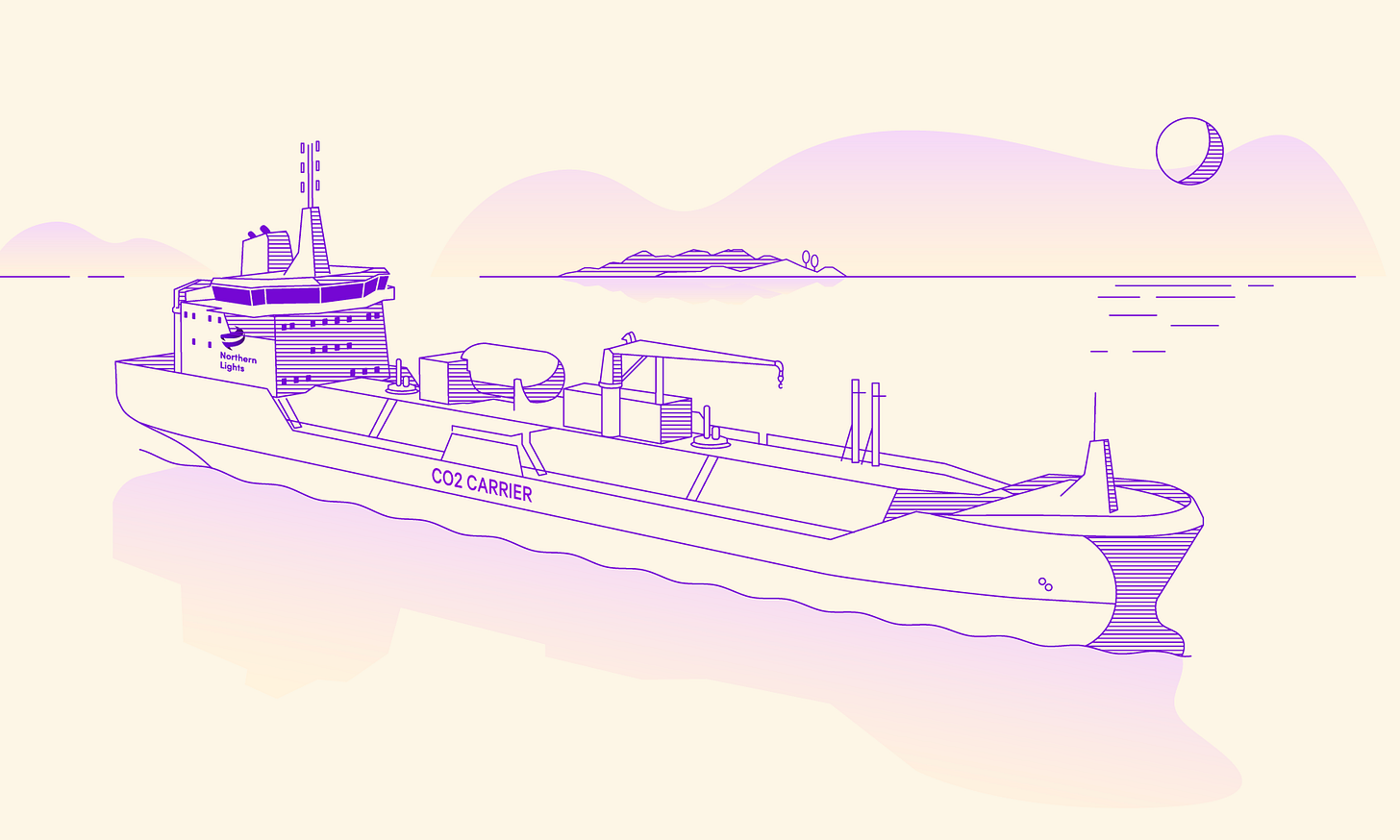Following in LNG's wake
First shipment of liquefied CO2 could be a prelude to a global marketplace
Welcome to Carbon Risk — helping investors navigate 'The Currency of Decarbonisation'! If you haven’t already subscribed please click on the link below, or try a 7-day free trial giving you full access.
By subscribing you’ll join more than 3,000 people who already read Carbon Risk. You can also follow my posts on LinkedIn and benefit from my referral program. Thanks for reading!
Estimated reading time ~ 10 mins
In 1959, the Methane Pioneer, a converted World War II freighter sailed from Louisiana across the Atlantic Ocean, heading for England. The shipment was the first ever cargo of LNG. The voyage was described by the company’s CEO as “the prelude to a new era when natural gas, previously wasted or shut in for want of accessible markets in many parts of the world, will be liquefied and transported by tanker to countries where gas is not naturally available.”
As Daniel Yergin outlines in his book, The New Map, the technology was developed during World War I but it wasn’t until the 1950’s that industry looked to commercialize it, spurred on by “the killer fog that enveloped London in 1952”. Over the next few years there were to be several further shipments of LNG, but it wasn’t until 1964 that the first waterborne LNG shipment to establish a firm contracted route took place - the Methane Princess Algeria-to-UK trip.
Sixty years later, the first waterborne commercial shipment of another gas is expected to take place. As with natural gas before it, this chemical compound has also been “wasted or shut in for want of accessible markets”, but will now “be liquefied and transported by tanker” to where it has value.
The Northern Lights project located in Norway will be the first carbon dioxide (CO2) transport and storage network when it opens later this year. The project is a partnership between Equinor, Shell and TotalEnergies. Captured CO2 will be shipped in specialised vessels to a location 60 miles off the west coast of Norway, where it will be permanently sequestered beneath the North Sea. The reservoir will initially be capable of storing 1.5 Mt CO2 per year.1
Around half of this capacity has been reserved for CO2 captured from the Heidelberg Materials cement factory in Brevik, and the Hafslund Oslo Celsio waste-to-energy plant. Beyond the projects commitment to the Norwegian government CCS strategy, Northern Lights signed their first commercial agreement in August 2022 with fertiliser manufacturer Yara. Beginning in 2025, 0.8 Mt CO2 per year will be transported from its facility in the Netherlands and moved hundreds of miles north across the North Sea to western Norway.
Northern Lights have commissioned a vessel design adapted from one that transports liquefied petroleum gas (LPG) and will now transport liquefied CO2 instead. To counter the higher density of liquid CO2 relative to LPG, the design also includes two pressurised cargo tanks. Construction on the first two dedicated CO2 transport vessels is underway, with two further ship recently placed on order. A single 20,000 m3 ship could transport ~1 Mtpa based on typical shipping distances within the EU.
Shipping solves geographical CO2 mismatch
Rapidly scaling up carbon capture and storage (CCS) capacity is fundamental to meeting net zero by 2050. However, there is often a geographical mismatch between the places that carbon capture occurs (i.e., industrial facilities and power generation plants), and the locations in which the CO2 can be permanently sequestered, or used in some other application (see The emergence of the carbon economy: Why construction materials are likely to dominate future CO2 demand).
The relative location between these two points dictates the optimal mode of CO2 transportation. In the United States and Canada pipelines are likely to remain the dominant form of CO2 transportation - if they can get past local objections (see Not in my backyard). Elsewhere in the world, ships capable of transporting CO2 will play a much larger role in ensuring access to a competitive marketplace for CO2.




